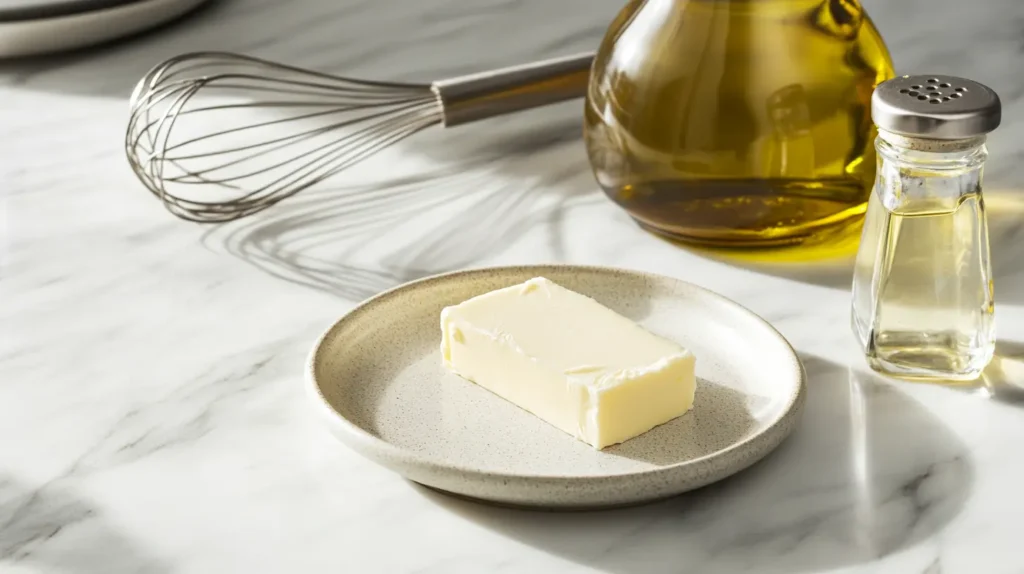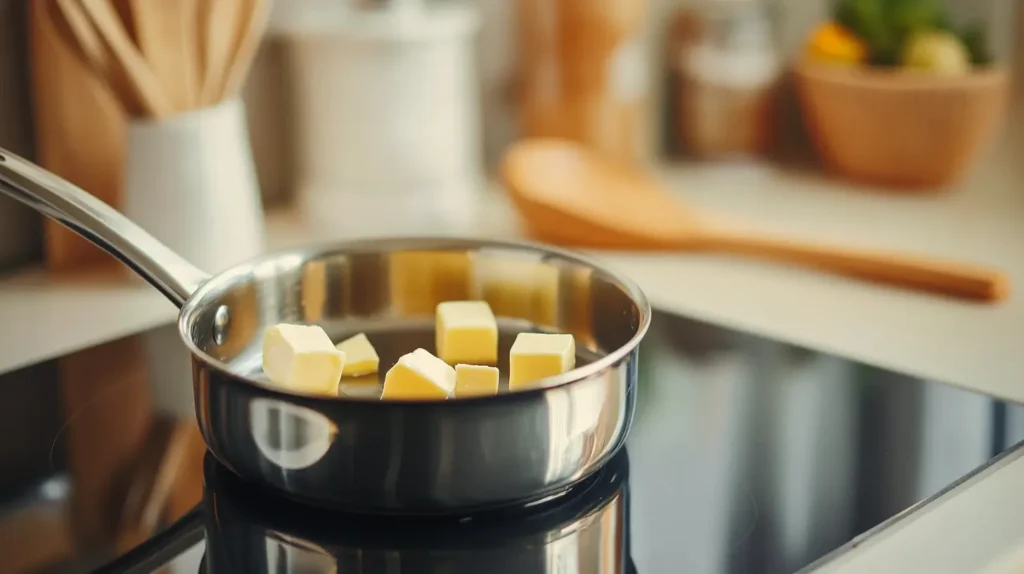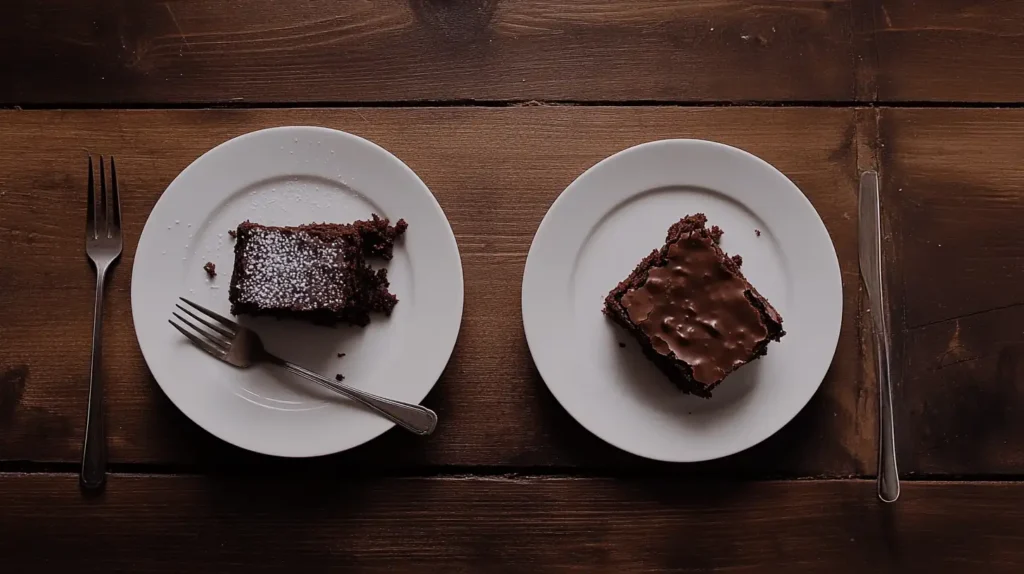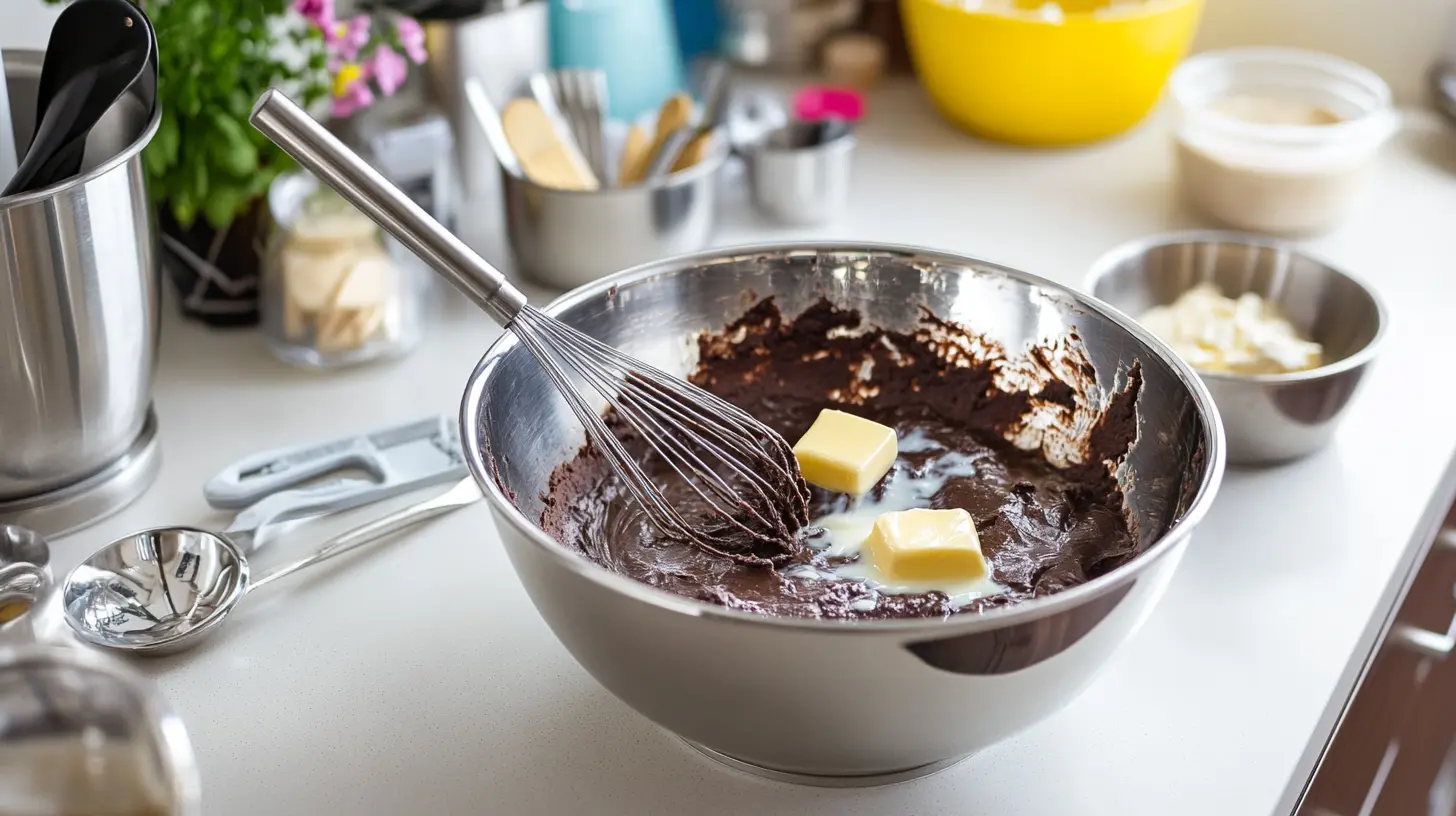Introduction
If you’ve ever wondered, “Can I use butter instead of oil in brownie mix?” the answer is a resounding yes! Swapping oil for butter is one of the simplest ways to enhance the flavor and texture of your brownies. Butter not only adds a rich, creamy taste but also brings a more indulgent, homemade feel to the final product.
Whether you’re using a boxed mix or making brownies from scratch, substituting butter for oil can transform your dessert into something truly special. In this guide, we’ll explore why butter is a fantastic option, how to make the swap seamlessly, and tips to ensure your brownies turn out perfectly every time. Let’s get started!
Understanding the Basics
The Role of Oil in Brownie Mix: Can Butter Be a Substitute?
Oil is a common ingredient in brownie recipes, particularly in boxed mixes. It’s prized for its ability to make brownies moist, soft, and rich without altering the flavor. Unlike butter, oil has a neutral taste, which allows the chocolate to shine as the main flavor in your brownies. It also mixes easily into the batter, creating a smooth consistency.
Because oil is entirely fat, it’s excellent at retaining moisture, making it ideal for creating chewy and gooey brownies. However, if you’re looking to elevate the flavor and give your brownies a more homemade touch, butter is a wonderful alternative.

How Butter Changes Brownie Mix Texture and Flavor
Butter not only adds moisture but also imparts a rich, creamy flavor that enhances the overall taste of your brownies. Its slightly nutty notes (thanks to the milk solids in butter) add depth to the dessert, making it taste more indulgent. Butter can also slightly alter the texture of your brownies:
- For Fudgy Brownies: Using melted butter instead of oil will give your brownies a denser, fudgier texture.
- For Cakey Brownies: Creaming softened butter with sugar before mixing it into the batter introduces air, which creates a lighter and more cake-like brownie.
Understanding these differences allows you to customize your brownies based on your personal preference, making butter a versatile and flavorful substitute for oil.
How to Swap Butter for Oil
Measuring the Right Amount of Butter
When substituting butter for oil in brownie mix, the key is to use the correct ratio. Butter contains water in addition to fat, so you’ll need slightly more butter to achieve the same richness as oil. The general rule is to use 1 cup of butter for every 3/4 cup of oil called for in the recipe.
For example, if your brownie mix calls for 1/2 cup of oil, you’ll need to use about 2/3 cup of melted butter. Measuring accurately ensures your brownies maintain the proper texture and consistency.

Tips for Melting and Mixing Butter
Using melted butter is the easiest way to incorporate it into your brownie batter, as it mixes smoothly with the other ingredients. Follow these steps for best results:
- Melt the Butter: Place the butter in a microwave-safe bowl and heat it in 15-second intervals, stirring in between, until fully melted. Alternatively, melt it gently on the stovetop.
- Let It Cool Slightly: Allow the melted butter to cool for a few minutes before adding it to your batter. This prevents it from accidentally cooking the eggs or altering the batter’s consistency.
- Mix Thoroughly: Whisk the melted butter into the batter until it’s fully incorporated and smooth.
Adjusting Baking Time When Using Butter
Brownies made with butter may bake slightly faster than those made with oil due to butter’s lower smoke point. Keep an eye on your brownies as they bake and start checking for doneness a few minutes earlier than the package or recipe suggests.
Insert a toothpick into the center of the brownies. If it comes out with a few moist crumbs, they’re ready. Overbaking can dry out the edges, so watch carefully for the perfect gooey texture.
Benefits of Using Butter in Brownies
Enhanced Flavor: Why Butter Tastes Better
One of the biggest advantages of using butter instead of oil in brownie mix is the flavor. Butter has a naturally rich and creamy taste that adds depth to the chocolate, elevating its sweetness while complementing its bitterness. Unlike oil, which has a neutral profile, butter contributes a slight nuttiness thanks to the milk solids it contains. This nuttiness blends beautifully with the cocoa in brownies, creating a more complex and indulgent flavor profile.
Additionally, when brownies are baked with butter, they fill your kitchen with a warm, inviting aroma that makes the experience even more enjoyable. The subtle buttery taste also pairs wonderfully with add-ins like nuts, caramel, or chocolate chips, enhancing the overall dessert experience. If you’ve ever felt that brownies made with oil taste a bit flat, switching to butter is a simple yet transformative upgrade.
Improved Texture: Fudgy or Cakey Results
Butter not only changes the flavor of brownies but also plays a major role in determining their texture. Melted butter, when mixed into brownie batter, creates a dense, moist structure that is ideal for fans of fudgy brownies. The fat in butter binds with the dry ingredients, locking in moisture and delivering that signature gooey bite that chocolate lovers adore.
On the flip side, softened butter can be creamed with sugar to introduce air into the batter. This method creates a fluffier mixture that results in brownies with a soft, cake-like crumb. This is perfect for those who prefer their brownies to have a lighter, less dense texture. By using butter, you have the flexibility to choose between these two styles simply by altering how you incorporate it into the batter.
For the best results, consider experimenting with your butter usage to find the perfect balance between richness and airiness. Whether you lean toward ultra-fudgy brownies or a more structured texture, butter gives you the tools to make your ideal dessert.

Creating a More Homemade Taste
There’s something about the flavor of butter that makes baked goods feel extra special, and brownies are no exception. When you use butter in your brownie mix, the results feel less processed and more like a dessert made entirely from scratch. This is because butter is a traditional ingredient in many classic baked goods, and its flavor carries the nostalgic quality of home-baked treats.
Butter also helps your brownies achieve a golden, slightly crispy edge, adding another layer of texture and flavor that’s hard to achieve with oil. The balance between the crispy edges and soft, rich interior creates a multi-dimensional brownie experience that tastes homemade with every bite.
If you’re serving these brownies at a gathering, you’ll likely hear compliments on how “homemade” they taste, even if they started with a boxed mix. For those who want to impress their guests or elevate a simple dessert, butter is a foolproof way to add that personal, bakery-like touch.
Ultimately, using butter instead of oil transforms brownies from a quick treat into a luxurious dessert that feels truly special. It’s a small change that makes a big difference in taste, texture, and overall enjoyment.
Creative Brownie Variations
Adding Flavored Butters for a Twist
If you’re ready to take your butter substitution to the next level, try using flavored butters in your brownie mix. These can add unique and unexpected flavors to your brownies. Here are a few ideas:
- Brown Butter: Melt butter on the stovetop and cook it until it turns golden brown with a nutty aroma. This enhances the depth of flavor, giving your brownies a gourmet twist.
- Herb-Infused Butter: Infuse melted butter with rosemary or thyme for a sophisticated flavor pairing with dark chocolate brownies.
- Spiced Butter: Mix melted butter with cinnamon, nutmeg, or a pinch of chili powder to add warmth or a hint of heat.
Using flavored butters lets you customize your brownies in creative and delicious ways, perfect for impressing guests or satisfying unique cravings.
Combining Butter and Oil for Balance
If you want to enjoy the best of both worlds, consider using a combination of butter and oil in your brownie mix. This approach allows you to benefit from the flavor of butter while retaining the moisture and soft texture provided by oil. Here’s how to do it:
- Replace half the oil in your recipe with melted butter. For example, if your mix calls for 1/2 cup of oil, use 1/4 cup of oil and 1/4 cup of melted butter.
- This balance ensures your brownies remain moist and flavorful without becoming too dense or greasy.
Combining butter and oil is an excellent strategy for achieving rich, moist brownies with a hint of buttery goodness.
Tips for Using Butter in Brownies
1. Pan Preparation
When using butter, greasing your pan properly is crucial to prevent sticking. Check out What Do You Spray on Brownies in a Pan? for detailed guidance.
2. Experiment with Variations
For cakier brownies, consider combining this adjustment with the tips in Can I Add an Extra Egg to Brownie Mix?.
3. Enhance Flavors
Butter-based brownies pair beautifully with creative recipes like the Slutty Brownie Recipe for an ultra-decadent treat.
Frequently Asked Questions
Do I Need to Melt Butter Before Adding It?
Yes, if you’re using butter as a substitute for oil in brownie mix, it’s best to melt it first. Melted butter mimics the liquid consistency of oil, making it easier to mix into the batter evenly. Allow the butter to cool slightly before adding it to avoid cooking the eggs in the batter.
Can I Use Salted Butter Instead of Unsalted?
Salted butter works fine in brownies, but you may want to adjust the additional salt in the recipe. Boxed mixes often include a small amount of salt, so using salted butter can amplify this flavor. If you’re concerned about the brownies being too salty, opt for unsalted butter instead.
Will Butter Make Brownies Too Greasy?
Not if you measure and mix it correctly! Butter contains water and milk solids in addition to fat, which can slightly alter the texture compared to oil. To avoid greasiness, ensure you use the proper ratio (1 cup of butter for every 3/4 cup of oil). Thoroughly mix the butter into the batter for a consistent result.
How Does Butter Affect Boxed vs. Homemade Mixes?
Butter works wonderfully in both boxed and homemade brownie mixes. For boxed mixes, it adds a rich, homemade flavor that elevates the overall dessert. In homemade recipes, butter can enhance the texture and provide additional depth to the chocolate flavor. Either way, it’s a delicious swap for oil!
Can I Use Butter Instead of Oil for Vegan Brownies?
No, since butter is not plant-based, it wouldn’t work for vegan brownies. Instead, you can try vegan butter or other plant-based oils like coconut oil or avocado oil to achieve similar results while keeping the recipe vegan-friendly.
Conclusion
So, can you use butter instead of oil in brownie mix? Absolutely! Substituting butter for oil is an easy way to enhance the flavor and texture of your brownies, giving them a rich, homemade taste that’s sure to impress. Whether you prefer fudgy, gooey brownies or light and cakey ones, butter offers the flexibility to achieve your ideal dessert.
Remember to adjust the measurements and follow the tips outlined in this guide for the best results. Experiment with melted butter for a fudgier texture, or try creamed butter for a lighter, airier crumb. Don’t be afraid to get creative by incorporating flavored butters or mixing butter with oil for a balanced approach.
Whether you’re baking for a special occasion or a simple treat, swapping butter for oil is a surefire way to take your brownies to the next level. So, grab your favorite brownie mix, melt some butter, and get baking—delicious results await!

